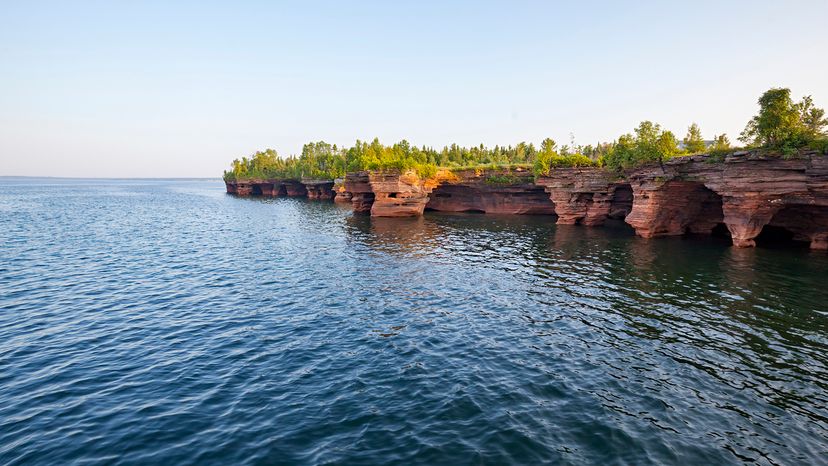It should come as no surprise that the Great Lakes are the largest in the nation. These five lakes are interconnected and found along the border with Canada.
All five lakes are also tremendously valuable to the ecology of the continent, with various plant, bird, mammal and fish species, as well as providing water resources for the surrounding animal and human inhabitants.
Technically, none of these lakes are in entirely within the borders of the United States, but neither are they entirely out of the U.S., so, with a note that we share their glory (and fresh water) with our Canadian neighbors, we'll place them at the top of our list.
1. Lake Superior (31,700 sq mi / 82,000 sq km)
Continuing with our trend of apropos naming, Lake Superior is the largest of the Great Lakes, and the largest lake in the United States.
Bordered by Minnesota, Wisconsin and Michigan — and by Ontario to the north — Lake Superior is also the largest freshwater lake by surface area in the world, a truly impressive distinction.
The massive amount of water that collects in Lake Superior eventually winds its way through the other Great Lakes, finding its way out to the Atlantic Ocean.
2. Lake Huron (23,000 sq mi / 60,000 sq km)
The second-largest lake of the Great Lakes, Huron is bordered by Michigan, with Ontario on the Canada side.
Having 30,000 islands helps it gain an additional superlative: Lake Huron has the longest shoreline of any of the Great Lakes. Its name comes from the name the French colonists knew the Indigenous inhabitants by (they called themselves Wyandot).
3. Lake Michigan (22,300 sq mi / 58,000 sq km)
The third-largest of the Great Lakes (and also the third largest lake in America) is Lake Michigan. Technically, due to being connected by the Straits of Mackinac and having the same surface elevation as Lake Huron, these two can be considered the same lake.
This nifty bit of trivia means that, in the hydrological sense, Lake Michigan-Huron, as they are sometimes called, constitute the largest freshwater lake in the world by surface area.
4. Lake Erie (9,910 sq mi / 25,700 sq km)
The fourth-largest Great Lake is Lake Erie. Situated off the lake's northern shore is Ontario; to the south are the states Michigan, Ohio, Pennsylvania and New York. It's the southernmost of the Great Lakes.
The Erie canal, named for the lake, connected Lake Erie to the Hudson River, which significantly altered trade in North America. It also led to the introduction of invasive species, which had negative effects on native species such as the lake trout.
5. Lake Ontario (7,340 sq mi / 19,000 sq km)
The fifth of the Great Lakes, in terms of surface area, is Lake Ontario. It is also the furthest east of the Great Lakes, and the last great lake that the water flows through on its way out to the Atlantic Ocean, via the Saint Lawrence River.
With Canada to the north and New York State to the south, the U.S.-Canada border goes right down the middle of the lake.
Lake Ontario gets its name from the Wyandot language, in which it means — for real — "great lake." Like all the lakes in the Great Lakes system, it was formed in the last ice age, 14,000 years ago.
